Research
Infographic
Recognizing Faculty with Disabilities: Data and Considerations from the Faculty Job Satisfaction Survey
Drawing upon Faculty Job Satisfaction Survey data from 2019 and 2020, this piece examines meaningful differences in perception of the academic workplace between faculty with visible disabilities, invisible disabilities, and no reported disabilities.
Case Study
Supporting the Next Generation of Faculty at Georgia State University
In this partner spotlight, Georgia State University shares how the institution applied its data-driven approach to student success to the faculty experience through the administration and rollout of the Faculty Job Satisfaction Survey.
Webinar
Success After Tenure: Lessons in Engaging Mid-Career Faculty
Based on the 2018 book, Success After Tenure: Supporting Mid-Career Faculty (Stylus), this webinar highlights the impetus behind compiling the volume, as well as the successful practices put in place by COACHE partners at Rochester Institute of Technology.
Browse Resources By Topic
- Career Path
- Faculty Development & Support
- Diversity, Equity, & Inclusion
- Higher Education Leadership
- Recruitment & Retention
- Work Life Balance
Gender and Race Differences in Faculty Assessment of Tenure Clarity: The Influence of Departmental Relationships and Practices
Citation:
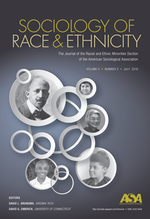
Abstract:
The authors look at how the intersection of gender and race influences pre-tenure faculty members’ perceptions of the clarity of tenure expectations. The authors also seek to identify potential predictors (assessment of mentoring, relationships with peers, feedback on progress toward tenure, and fairness in tenure decision making and evaluation) of perceptions of tenure clarity for four intersectionally defined groups, including historically underrepresented minority women (URMW). The authors use an intersectional perspective and the gendered and racialized organizations’ theoretical lens to interpret the results. The data set comes from the Faculty Job Satisfaction Survey. Findings show that compared with white men, URMW are less satisfied with their relationships with peers and with the fairness in the evaluation of their work. They are also less likely to agree that mentoring is effective, that tenure decisions are fair, and that messages about tenure are consistent.Benchmark Best Practices: Tenure and Promotion
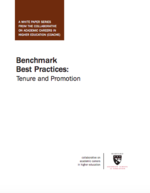
Abstract:
The COACHE surveys of college faculty produce data that are both salient to full-time college faculty and actionable by academic leaders. The survey items are aggregated into 20 benchmarks representing the general thrust of faculty satisfaction along key themes. This white paper discusses the themes of tenure policies, tenure clarity, and promotion.
Administrators and faculty alike acknowledge that, at most institutions, the bar to achieve tenure has risen over time. While it is impossible to eliminate anxiety from the minds of all pre-tenure faculty members, or the pressures exerted on their lives en route to tenure, academic leaders can improve the clarity of tenure policies and expectations without sacrificing rigor. And while the academy has recently improved many policies for assistant professors (e.g., research leave; stop-the-tenure-clock; part-time tenure-track options), it has done far less for associate professors. Ideas have emerged from COACHE research on tenured faculty.
Perspectives on Midcareer Faculty and Advice for Supporting Them
Citation:

Abstract:
This 8-page white paper was produced for an invited presentation at the Association of Public Land-grant Universities' (APLU) Council on Academic Affairs Summer Meeting in Santa Fe, New Mexico. The paper examines the experiences of midcareer faculty, who face an increased teaching load, greater expectations for service and advising, a more competitive market for grants, and the disappearance of mentoring programs that supported them as early-career faculty. The toll of these obligations is heavier on women and faculty of color. Institutions can address the challenges midcareer faculty face by designing orientations that cover the entire career, implementing career re-visioning programs, providing opportunities for re-engagement, and mentoring associate professors.The Art of Diversity: A Chronicle of Advancing the University of California Faculty through Efforts in Diversity, Equity, and Inclusion, 2010–2022
Citation:

Abstract:
In The Art of Diversity: A Chronicle of Advancing the University of California Faculty through Efforts in Diversity, Equity, and Inclusion, 2010–2022, Susan Carlson details the University of California’s systemwide efforts to increase the diversity of its faculty during her tenure as Vice Provost, UC Office of the President. It tells the story of a remarkable alignment of California stakeholders—from the UC Regents and University leaders to the Academic Senate and the California legislature, from small faculty teams to multicampus coalitions—and how they worked to create a 21st-century faculty that reflects the diversity of California. This chronicle’s central focus is on a community of practice dedicated to excellence and equity. Efforts began with a program focused on finding new ways to collect data on faculty recruitment and create multicampus discussions on key topics like mentoring, intersectional racial and gender identities, workplace climate, and statements on diversity, equity, and inclusion. These efforts continued with a novel interactive theater program for department chairs and deans. The capstone effort, Advancing Faculty Diversity, provides opportunities to pilot new ways to recruit and sustain inclusive and equitable academic communities.
Carlson addresses this central academic issue: how to build a faculty that is different from the past not only in its gender and racial makeup, but also in its research methodologies, transdisciplinary partnerships, and multimodal pedagogies.
Job Satisfaction Among Nursing Faculty in Canada and the United States
Citation:

Abstract:
Higher education wants a satisfied workforce to ensure the organization reaches their stated or evolving goals; however, if faculty are dissatisfied, there can be harmful and long-term consequences on productivity and organizational outcome. This study examined nursing faculty's job satisfaction and intent to stay in universities in the United States and Canada.Cross-cultural mentoring in higher education: the use of a cultural identity development model
Citation:

Abstract:
This article examines the role that cultural identity development plays in understanding cross-cultural mentoring encounters between White faculty and faculty of color. The authors present the components of a conceptual framework for developing mentoring approaches that consider a person’s cultural identity stage of development. Using a systematic approach, the authors consider the fundamental principles of cultural identity development theory combined with higher education contextual conditions, resulting in an approach by which mentors and protégés could govern their interactions. The article concludes with implications for mentoring program administrators, faculty, and leaders in higher education.- 1 of 9
- »
Faculty Leadership and Institutional Resilience: Indicators, Promising Practices, and Key Questions
Citation:
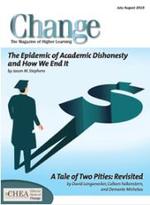
Abstract:
There is renewed interest in shared governance in American higher education. This evidence-based, exploratory study of faculty leadership identifies promising practices for shared stewardship and provides follow-up questions for senior leaders to assess the state of faculty leadership and shared governance on their own campuses. The findings are based on interviews with chief academic officers or faculty officers and chief elected faculty leaders at baccalaureate, masters, and research institutions identified as exemplars through the Faculty Job Satisfaction Survey. The author argues for an expansive view of faculty leadership as a key component of institutional resilience.
Growing Our Own: Cultivating Faculty Leadership
Citation:
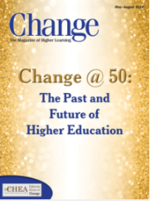
Abstract:
To overcome the pressures pulling the academy apart, presidents and provosts, governing boards and legislatures, foundations and associations should commit to the cultivation of leadership from faculty members and by them. As the faculty profession and population become increasingly complex, leaders will need skills in relating, sensemaking, visioning, and inventing. A skills inventory conducted among provosts, deans, and senior faculty development administrators revealed that while most had strengths in the first two categories, their visioning and inventing skills were less developed. Institutions can cultivate these skills in faculty and invite faculty into the leadership process—and they must do so in order to effectively develop the faculties of the future.
Climate Change: Creating Space for Interdepartmental Problem Solving at Skidmore College
Citation:

Abstract:
Historically, academic departments at Skidmore College operated with large degrees of autonomy from one another. Groups rarely collaborated, which made it difficult for faculty and administrators to address climate and leadership challenges across divisions. In the absence of a centralized group equipped with the tools and resources needed to address these issues, Skidmore partnered with the Collaborative on Academic Careers in Higher Education (COACHE) and conducted the Faculty Job Satisfaction Survey to identify ways to improve departmental climates.
Using Skidmore’s survey results as a baseline for their first meeting, the team, which Skidmore leaders dubbed the ‘COACHE Collaborators’, worked together to identify three areas of departmental climate in need of attention: collegiality, diversity and inclusion, and work-life balance.
Faculty Departure and Retention at Small Liberal Arts Colleges
Citation:
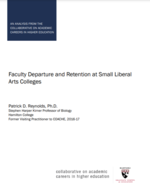
Abstract:
Voluntary faculty departures can often be prevented, but a lack of common exit procedures have hindered institutions’ ability to create proactive practices of faculty retention and instead harbor reactive tendencies with little positive outcome. Through interviews with 22 CAOs at liberal arts colleges, Patrick D. Reynolds, former Visiting Practitioner to COACHE, discovered partner employment and career choice were the two most prominent reasons for departures. Outliers also revealed that work and social environments, especially for faculty members of minority groups, often played a role in dissatisfaction.
Success After Tenure: Lessons in Engaging Midcareer Faculty
Citation:
Abstract:
Mid-career faculty actively seek professional satisfaction and personal well-being in their careers at the departmental and institutional level. However, a growing body of research tells us that the policies and practices in place at colleges and universities do not always support this goal. This webinar, “Success After Tenure: Lessons in Engaging Mid-Career Faculty,” offers an inside take on the themes of the book Success After Tenure: Supporting Mid-Career Faculty and provide real-world best practices from practitioners in the field.
Full Text
Watch the Recording
Download the presentation slides
Building a Better Exit Study: A National Effort to Understand Faculty Retention & Turnover
Citation:
Abstract:
In 2016, COACHE partnered with the University of California System to pilot our newest undertaking -- the Faculty Retenion and Exit Survey. This survey is the only multi-institutional study of faculty retention and exit, and examines the costs, conduct, and causes of faculty turnover.
In this webinar, Kiernan Mathews and Todd Benson describe how the survey came to be, and outline some of the initial findings from the pilot study along with some practical recommendations for Academic Affairs administrators.
Correlates of Work-Life Balance for Faculty Across Racial/Ethnic Groups
Citation:
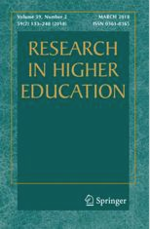
Abstract:
Very few studies have examined issues of work-life balance among faculty of different racial/ethnic backgrounds. Utilizing data from the Faculty Job Satisfaction Survey, this study examined predictors of work-life balance for 2,953 faculty members from 69 institutions. The predictors of work-life balance included faculty characteristics, departmental/institutional characteristics and support, and faculty satisfaction with work. While African American women faculty reported less work-life balance than African American men, the reverse was true for Latina/o faculty. In addition, White faculty who were single with no children were significantly less likely to report having work-life balance than their married counterparts with children. Faculty rank was a significant positive predictor of work-life balance for all faculty. Notably, the findings highlight the importance of department and institutional support for making personal/family obligations and an academic career compatible. In addition, satisfaction with time spent on research had positive associations with work-life balance for all faculty.
Reasonableness and clarity of tenure expectations: Gender and race differences in faculty perceptions.
Citation:
Abstract:
This dissertation studies how higher education policies and practices can affect faculty retention and proposes changes that higher education institutions need to make to retain their faculty. The first manuscript investigates the reasonableness of tenure expectations as it relates to work-life balance, the second explores whether women’s and men’s assessments of tenure-related departmental practices influence their perceptions of clarity of tenure expectations, and the third looks at how the intersection of gender and race influences faculty perceptions of clarity of tenure expectations. The dissertation uses Faculty Job Satisfaction Survey data from a sample of 2,438 tenure-track assistant professors at research universities.
Understanding the changing faculty workforce in higher education: A comparison of non-tenure track and tenure line experiences
Citation:

Abstract:
Non-tenure track faculty are a growing majority in American higher education, but research examining their work lives is limited. Moreover, the theoretical frameworks commonly used by scholars have been critiqued for reliance on ideologically charged assumptions. Using a conceptual model developed from Hackman and Oldham’s (1980) Job Characteristics Model (JCM) and prior research on faculty workplace experiences, this study considers the extent to which full-time non-tenure track and tenure line faculty share a professionalized approach to their jobs, working conditions, and how this is associated with their organizational commitment.
Satisfaction with resources, rewards, autonomy and feedback had a significant positive relationship with odds of organizational commitment for all faculty groups. Overall, the results suggest being removed from the tenure track is not associated with faculty viewing their jobs in a substantially different way than those in tenure line positions, which underscores the importance of conceptualizing full-time faculty work as an integrated whole.
Recognizing Faculty with Disabilities: Data and Considerations from the Faculty Job Satisfaction Survey
Citation:
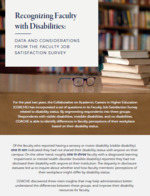
Abstract:
In 2019, COACHE added a series of questions about disability status to our flagship Faculty Job Satisfaction Survey. Two years of data were examined to understand how faculty's experience of the academic workplace might vary depending on their disability type and disclosure status. Review the infographic below to understand how attitudes and disclosure differ across types of disabilities and how administration can create inclusive policies to address these key insights. Click here for an accessible version of the document.Work–Family Balance and Tenure Reasonableness: Gender Differences in Faculty Assessment
Citation:
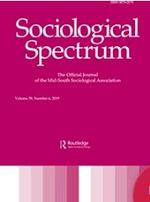
Abstract:
Perceptions of work–family balance and of the reasonableness of tenure expectations are key faculty retention factors. Using the Faculty Job Satisfaction Survey, which includes data from 2,438 tenure-track assistant professors, Rodica Lisnic, Anna Zajicek, and Brinck Kerr explore whether faculty assessment of departmental and institutional support for family influences their perceptions of the reasonableness of tenure expectations.
Results reveal that women are less likely than men to report tenure expectations as scholars are reasonable and that departments and institutions are supportive of family-work balance. Departmental support for family-work balance, caring for an ill family member, satisfaction with family-friendly policies, and workload have the strongest association with reasonableness. Satisfaction with family-friendly policies has a significant relationship with reasonableness of tenure expectations only for faculty with family care responsibilities. These results have implications for family-friendly policies and practices in academia.
Personal and Institutional Predictors of Work-Life Balance among Women and Men Faculty of Color
Citation:
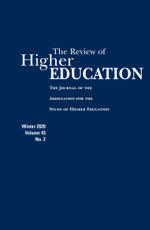
Abstract:
This study examines predictors of perceived work-life balance among women and men faculty of color using data from the Collaborative on Academic Careers in Higher Education (COACHE). Asian American men faculty report higher perceived work-life balance, while African American women faculty report lower perceived work-life balance as compared to other faculty members. Findings from multivariate analyses show that the strongest, most consistent positive predictor of perceived work-life balance was the faculty perception that the institution does what it can to make personal/family obligations and an academic career compatible. The findings offer important implications for institutional and departmental climate and policy.Browse Resources by Faculty Type
Toward a Greater Understanding of the Tenure Track for Minorities
Citation:

Abstract:
To understand life on the tenure track, the Collaborative on Academic Careers in Higher Education (COACHE) conducts an annual Faculty Job Satisfaction Survey. Through surveys and in focus groups and interviews, hundreds of tenure-track faculty members share what affects their workplace satisfaction and, ultimately, their success. The clarity and reasonableness of the criteria and standards for achieving tenure, institutional and support for teaching and research, the effectiveness of workplace policies and practices, departmental climate and collegiality, and work/life balance are among the issues addressed. In 2009, for the first time, COACHE collected enough faculty respondents who self-identified in each racial and ethnic category, in proportions similar to their representation in the faculty population nationally, to look at each group separately. An examination of the different groups' experiences of faculty life is important to the welfare of students. This article presents a series of commonly asked questions about the COACHE research.
- «
- 4 of 4
Beyond Teaching and Research: Faculty Perceptions of Service Roles at Research Universities
Citation:
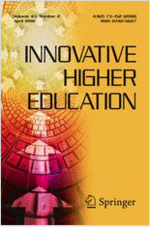
Abstract:
Faculty members in higher education institutions frequently have the responsibility of providing service activities to their institutions, professional societies, and external communities. This responsibility, however, generally carries little reward in the workplace and does not play a major role in promotion criteria. This study drew upon a sample of 4,400 research university faculty members surveyed through the Faculty Job Satisfaction Survey to explore their satisfaction with service roles by academic rank. Findings showed that mid-career faculty members at the associate professor rank were significantly less satisfied with their service functions, including workload, equity, work balance, recognition, and institutional support, when compared with both assistant and full professors.
Understanding the changing faculty workforce in higher education: A comparison of non-tenure track and tenure line experiences
Citation:

Abstract:
Non-tenure track faculty are a growing majority in American higher education, but research examining their work lives is limited. Moreover, the theoretical frameworks commonly used by scholars have been critiqued for reliance on ideologically charged assumptions. Using a conceptual model developed from Hackman and Oldham’s (1980) Job Characteristics Model (JCM) and prior research on faculty workplace experiences, this study considers the extent to which full-time non-tenure track and tenure line faculty share a professionalized approach to their jobs, working conditions, and how this is associated with their organizational commitment.
Satisfaction with resources, rewards, autonomy and feedback had a significant positive relationship with odds of organizational commitment for all faculty groups. Overall, the results suggest being removed from the tenure track is not associated with faculty viewing their jobs in a substantially different way than those in tenure line positions, which underscores the importance of conceptualizing full-time faculty work as an integrated whole.
Is the Tenure Process Fair? What Faculty Think
Citation:
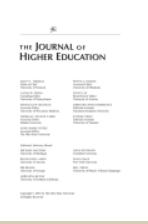
Abstract:
A conceptual framework grounded on procedural justice theory was created to explain how judgments about the fairness of tenure decision-making evolved among faculty who had not yet undergone the review. The framework posits that faculty beliefs about fairness are influenced directly by their workplace experiences and both directly and indirectly by their socio-demographic characteristics.
Structural equation modeling was used to assess the proposed effects with data from 2,247 pre-tenure assistant professors at 21 research universities. The results substantiate the importance of perceived campus and department conditions.
Equitable treatment of junior faculty at the department level and effectiveness of feedback have the strongest relationships with beliefs about the equity of tenure decision-making. An individual’s sense of control during the process of constructing the tenure dossier predicts his or her judgments about the fairness of tenure reviews. Practical suggestions for campus leaders and implications for future research are discussed.
Gender Differences in Faculty Member Job Satisfaction: Equity Forestalled?
Citation:

Abstract:
Guided by Hagedorn’s (2000) theory of faculty job satisfaction, mindful of social and organizational structures of higher education, and acknowledging recent changes in the academic labor market, this study examines satisfaction for approximately 30,000 tenured and tenure-track faculty members in 100 US colleges and universities. Findings revealed similarity between female and male faculty members in some aspects of work satisfaction, but difference in other areas in which women reported lower satisfaction. Findings also revealed that perceptions of department fit, recognition, work role balance, and mentoring are more important to women faculty’s satisfaction than male peers. These findings have implications for policy and practice.
Beyond Teaching and Research: Faculty Perceptions of Service Roles at Research Universities
Citation:

Abstract:
Faculty members in higher education institutions frequently have the responsibility of providing service activities to their institutions, professional societies, and external communities. This responsibility, however, generally carries little reward in the workplace and does not play a major role in promotion criteria. This study drew upon a sample of 4,400 research university faculty members surveyed through the Faculty Job Satisfaction Survey to explore their satisfaction with service roles by academic rank. Findings showed that mid-career faculty members at the associate professor rank were significantly less satisfied with their service functions, including workload, equity, work balance, recognition, and institutional support, when compared with both assistant and full professors.
Understanding the changing faculty workforce in higher education: A comparison of non-tenure track and tenure line experiences
Citation:

Abstract:
Non-tenure track faculty are a growing majority in American higher education, but research examining their work lives is limited. Moreover, the theoretical frameworks commonly used by scholars have been critiqued for reliance on ideologically charged assumptions. Using a conceptual model developed from Hackman and Oldham’s (1980) Job Characteristics Model (JCM) and prior research on faculty workplace experiences, this study considers the extent to which full-time non-tenure track and tenure line faculty share a professionalized approach to their jobs, working conditions, and how this is associated with their organizational commitment.
Satisfaction with resources, rewards, autonomy and feedback had a significant positive relationship with odds of organizational commitment for all faculty groups. Overall, the results suggest being removed from the tenure track is not associated with faculty viewing their jobs in a substantially different way than those in tenure line positions, which underscores the importance of conceptualizing full-time faculty work as an integrated whole.
Clear as Mud: Promotion Clarity by Gender and BIPOC Status Across the Associate Professor Lifespan
Citation:
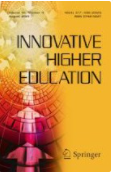
Abstract:
Mid-career faculty members often seek to advance to the highest faculty rank of full professor, but research suggests women and Black, Indigenous and Other People of Color (BIPOC) faculty face inequitable patterns in advancement to the full professor rank. This study focuses on associate professors’ perceptions of promotion clarity, or the degree to which they are clear about the processes and criteria for advancing to the full professor rank.Women Faculty in STEM Disciplines: Experiences with the Tenure Process and Departmental Practices
Citation:
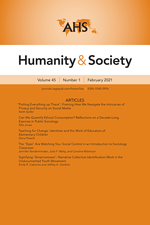
Abstract:
Using Faculty Job Satisfaction Survey data, the purpose of the study is to explore predictors of perceptions of tenure clarity for faculty in STEM and non-STEM fields. We use the gendered organization framework to examine whether for four groups of faculty (women and men in STEM and women and men in non-STEM), assessment of fairness in tenure decisions and evaluations, messages about tenure requirements, mentoring, and relationships with peers have a similar effect on their assessment of tenure clarity. Women in STEM fields are less likely to perceive the expectations for tenure as clear or to assess tenure decisions and evaluations as fair, mentoring as effective, and relationships with peers as satisfactory.Work–Family Balance and Tenure Reasonableness: Gender Differences in Faculty Assessment
Citation:

Abstract:
Perceptions of work–family balance and of the reasonableness of tenure expectations are key faculty retention factors. Using the Faculty Job Satisfaction Survey, which includes data from 2,438 tenure-track assistant professors, Rodica Lisnic, Anna Zajicek, and Brinck Kerr explore whether faculty assessment of departmental and institutional support for family influences their perceptions of the reasonableness of tenure expectations.
Results reveal that women are less likely than men to report tenure expectations as scholars are reasonable and that departments and institutions are supportive of family-work balance. Departmental support for family-work balance, caring for an ill family member, satisfaction with family-friendly policies, and workload have the strongest association with reasonableness. Satisfaction with family-friendly policies has a significant relationship with reasonableness of tenure expectations only for faculty with family care responsibilities. These results have implications for family-friendly policies and practices in academia.
- 1 of 5
- »
Browse Resources by Type
2019 Year in Review: The Collaborative on Academic Careers in Higher Education
Citation:
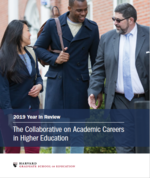
Abstract:
COACHE’s 2019 work focused on two types of faculty members: those who leave and those who lead. This work incorporated a larger number of faculty members than in 2018, with 41 colleges, universities, and specialized programs in the 2019 Faculty Job Satisfaction Survey cohort, a total of more than 28,000 faculty participants, and an average institutional response rate of 54 percent.
Institutional reports for the Faculty Retention and Exit Survey indicate why faculty leave—or remain—at their institutions, and where inequities arise in retention negotiations. COACHE’s work also examined how we define faculty leadership, and which faculty leaders—women and humanities faculty among them—are less likely to receive institutional support in sustaining other aspects of their work.
2018 Year in Review: The Collaborative on Academic Careers in Higher Education
Citation:
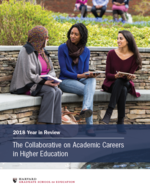
Abstract:
In 2018, the Collaborative on Academic Careers in Higher Education collaborated with the Harvard Institutes for Higher Education (HIHE) to launch the first ever Seminar on Leadership of the Faculty, a three-day workshop for academic leadership. An introduction between Harvard Club of New York, HIHE, and COACHE partners in the CUNY system led to a $100,000 grant for CUNY to invest in developing diverse faculty leadership. Data from the Faculty Job Satisfaction Survey yielded an exploration of mid-career faculty, an ongoing pursuit to prevent mid-career malaise and provide support. The Faculty Retention and Exit Survey revealed the risk that a “counteroffer culture” poses to faculties’ home institutions during salary negotiations. Finally, an overhaul of our data dissemination process has made it easier for researchers to access our data in order to implement institutional changes.
2017 Year in Review: The Collaborative on Academic Careers in Higher Education
Citation:
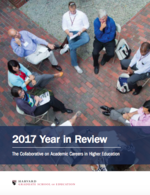
Abstract:
In the 2016-2017 academic year, the Collaborative welcomed our largest and most diverse cohort of Faculty Job Satisfaction partners to date with over 60 higher education institutions—public and private, two- and four-year—joining our ranks. After a successful pilot, we launched the first ever multi-institutional study of Faculty Retention and Exit to 12 institutions nationwide in the spring and 22 in the fall. And to complement our survey offerings, we adapted our reporting platform to be more robust than ever, with additional race and ethnicity categories and academic area analyses.
Does the environment matter? Faculty satisfaction at 4-year colleges and universities in the USA
Citation:

Abstract:
Faculty members seek employment in an environment that offers good fit and work satisfaction. This study examined faculty satisfaction by institution type (baccalaureate, master’s, doctoral, and research) for recent full-time faculty members in 100 4-year institutions in the United States.
Analysis of the Faculty Job Satisfaction Survey showed that respondents in baccalaureate colleges reported the highest satisfaction. Subsequent analyses to examine strength of difference across institutional type confirmed initial differences for some facets of satisfaction, but not for others. Results showed that faculty perceptions of the institutional environment firmly contribute to their satisfaction. The authors discuss the implications of their findings for policies and programs.
Faculty Leadership and Institutional Resilience: Indicators, Promising Practices, and Key Questions
Citation:

Abstract:
There is renewed interest in shared governance in American higher education. This evidence-based, exploratory study of faculty leadership identifies promising practices for shared stewardship and provides follow-up questions for senior leaders to assess the state of faculty leadership and shared governance on their own campuses. The findings are based on interviews with chief academic officers or faculty officers and chief elected faculty leaders at baccalaureate, masters, and research institutions identified as exemplars through the Faculty Job Satisfaction Survey. The author argues for an expansive view of faculty leadership as a key component of institutional resilience.
The Academic Environment and Faculty Well-Being: The Role of Psychological Needs
Citation:
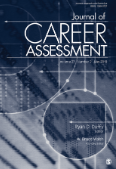
Abstract:
In response to recent research on the well-being of higher education faculty, which has lacked a theoretical model, this study used self-determination theory to model the well-being of 581 tenured and tenure-eligible faculty members at a large midwestern university. The study looked at the relationships between environmental factors (e.g., administrative support, research support, promotion and tenure support) and faculty well-being (i.e., teaching/service satisfaction and global satisfaction), hypothesizing that volitional autonomy, perceived competence, and perceived relatedness would partially mediate these relationships. Results of path analysis indicated that all relations between the environment and teaching/service satisfaction were fully mediated by volitional autonomy and perceived competence, whereas all relations between the environment and global satisfaction were partially mediated by perceived relatedness. These findings highlight that psychological needs are central in understanding the relations between the environment and faculty well-being. The study discusses additional implications and future directions for research.
COACHE Summary Tables 2014: Selected Dimensions on Faculty Workplace Climate by Discipline, Race/Ethnicity, and Gender
Citation:
Abstract:
These tables present data from the 2014 Faculty Job Satisfaction Survey focusing on workplace climate, including responses to questions about workload, mentoring, departmental engagement, collaboration, and clarity around tenure decisions. Results are disaggregated by department, race/ethnicity, and gender.Full Text
Download the summary tables
Faculty Job Satisfaction Survey Data Snapshots
Citation:
Abstract:
These charts present data from the 2013 Faculty Job Satisfaction Survey, focusing on results across seven public universities. The charts represent the arithmetic mean, by academic area and by rank and tenure status, of select COACHE survey results. "NTT” faculty are full- time, non-tenure-track faculty. All items were rated by respondents on a five-point scale of satisfaction, agreement, etc. Thus, for example, faculty were asked not to report the number of courses they teach, but to rate their satisfaction with the number of courses they teach.
The Experience of Tenure-Track Faculty at Research Universities: Analysis of COACHE Survey Results by Academic Area and Gender
Citation:
Abstract:
The COACHE Faculty Job Satisfaction Survey is organized around five themes: tenure, nature of the work, policies and practices, climate, culture, and collegiality, and global satisfaction. This analysis looks at survey data for pre-tenure faculty at research universities. In particular, the analysis examined gender differences across twelve academic areas. Mean scores for each of the 83 survey dimension were ranked across all 12 academic areas.
Building a Better Exit Study: A National Effort to Understand Faculty Retention & Turnover
Citation:
Abstract:
In 2016, COACHE partnered with the University of California System to pilot our newest undertaking -- the Faculty Retenion and Exit Survey. This survey is the only multi-institutional study of faculty retention and exit, and examines the costs, conduct, and causes of faculty turnover.
In this webinar, Kiernan Mathews and Todd Benson describe how the survey came to be, and outline some of the initial findings from the pilot study along with some practical recommendations for Academic Affairs administrators.
- «
- 2 of 2
Benchmark Best Practices: Nature of Work: Teaching
Citation:
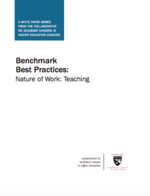
Abstract:
The COACHE surveys of college faculty produce data that are both salient to full-time college faculty and actionable by academic leaders. The survey items are aggregated into 20 benchmarks representing faculty satisfaction along key themes. This white paper examines teaching, based on survey responses that measure satisfaction or dissatisfaction with the portion of faculty members’ time spent on teaching, the number and level of courses taught, the number and quality of students taught, discretion over course content, and the distribution of teaching workload across department faculty.
The challenge for every faculty member is to strike a balance between institutional expectations for teaching and the time available to invest in it. Dissatisfaction can occur when faculty members feel expectations for teaching are unreasonable, institutional support is lacking, or the distribution of work is inequitable. Satisfaction can be raised through workshops about improving teaching, mentoring students, using instructional technologies, and experimenting with new techniques.
Benchmark Best Practices: Nature of Work: Service
Citation:
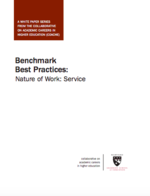
Abstract:
The COACHE surveys of college faculty produce data that are both salient to full-time college faculty and actionable by academic leaders. The survey items are aggregated into 20 benchmarks representing faculty satisfaction along key themes. This white paper examines service: faculty satisfaction or dissatisfaction with the portion of their time spent on service, the number of committees on which they serve, the attractiveness of those committees, and the discretion faculty have to choose them.
The COACHE survey instrument asks questions about the quantity, quality, and equitable distribution of their service work, as well as their institutions’ efforts to help faculty be service leaders and sustain their other commitments. In follow-up interviews with faculty and institutional leaders, a common refrain emerged: faculty are eager to participate not in more service, but in more meaningful service, and institutions must do better to engage and to reward those contributions.
Benchmark Best Practices: Nature of Work: Research
Citation:

Abstract:
The COACHE surveys of college faculty produce data that are both salient to full-time college faculty and actionable by academic leaders. The survey items are aggregated into 20 benchmarks representing faculty satisfaction. This white paper discusses research, including the portion of faculty time spent on research, external funding, the influence faculty have over the focus of their research/scholarly/creative work, the availability of course release time, and institutional support. Faculty satisfaction with research is a function not just of the time faculty members have to commit to research, but of the clarity and consistency of institutional expectations for research productivity and the resources colleges and universities provide faculty to meet them.
COACHE researchers interviewed leaders from member institutions whose faculty rated items in this theme exceptionally well. While several of the highest ratings were found at baccalaureate institutions, the lessons derived from our interviews with their leaders are transferrable to universities at the school-, college-, or division-level.

